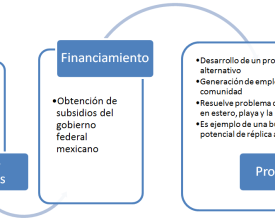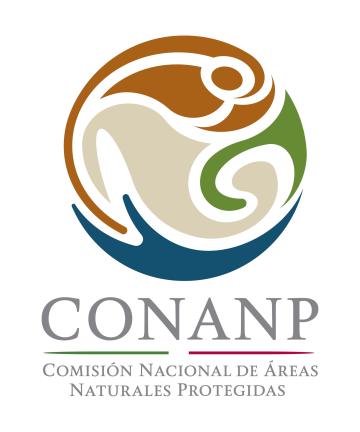Making money from scraps
To address the need for proper management of fisheries waste, members of the fishing community El Caracol in Guasave, Sinaloa state, founded Grupo Crustil - a small-scale processing enterprise. The group uses discards from artisanal fisheries to produce fishmeal. The process creates opportunities for alternative income generation, maximises product utilization and mitigates environmental impacts.
Context
Challenges addressed
- Fisheries waste polluting ecosystems and lacking waste management strategy
- Accumulation of fisheries waste in estuaries, canals and at the beach
- Lacking employment opportunities in the community
- Lacking awareness in the community for suitable handling of fisheries waste
Location
Process
Summary of the process
tba
Building Blocks
Business plan for fishmeal production
A business plan for processing fish and shrimp waste into fishmeal is developed, defining the enterprise’s design and determining its costs. The plan incorporates the concept of operations, organisational structure, system design, production processes, training modules, marketing and sales as well as a feasibility analysis.
Enabling factors
- Definition of the organisation, administration and operation of the project
- Technical assistance in the preparation of the business plan
- Capacity building of the group that is managing the project
Lesson learned
- The business plan is the basis for the implementation and administration of the project
- Defining the project’s feasibility needs to take the local conditions into consideration
- Define the market potential and processes for commercialization
Government seed funding
To receive federal government funding from the National Commission on Protected Areas and other supporters, the enterprise must demonstrate its environmental and social benefits (as detailed in the business plan) alongside the ability to be self-sustaining within a given period of time. The grant is used to purchase necessary equipment and train staff.
Enabling factors
Subsidies by the Mexican government helped to hire a team and build capacities of the management body
Lesson learned
- It is important to explore different potential sources of funding
- The project has to show that it can be self-sustaining at a certain stage and will not depend on subsidies for its implementation forever
Processing enterprise
The small-scale processing factory produces fish and shrimp meal. The product is used as animal feed for poultry, pigs, cattle or farmed fish or shrimp, and as organic fertilizer. It is sold in local and regional markets.
Enabling factors
- The resources (1,000 tons of fisheries waste) was available for no additional costs
- Existing local and subnational market
Lesson learned
- The management body realized the importance of capacity development in order to produce high-quality products that match common quality standards
- It is possible to implement projects that generate income as well as having positive social and environmental effects
- The project has been presented to other fishermen and communities in the Gulf of California, Mexico and the management body has been asked to advise the replication and implementation of this approach in other areas.
Dissemination and training
The enterprise helps to raise community awareness on the need for proper management of fisheries waste by collecting their waste, which is then picked-up by staff of Grupo Crustil. Training on the production of fish and shrimp meal is provided to increase staff competency. The enterprise is also presented to other communities in the area to facilitate its replication.
Enabling factors
tba
Lesson learned
tba
Impacts
- The accumulation of fisheries waste in the estuary, canals and beach is declining. Grupo Crustil processes about 1,000 tons of waste per year! This also reduces the contamination and the risk for infections and diseases.
- In addition, the enterprise and its activities lead to a change in the community members’ attitude towards reducing the contamination of the estuary, canals and beach. The local population became sensitized for the importance of sustainable fisheries waste management and its impacts on their own health.
- The members of the group that run the project are no longer fishermen but dedicate all their time to the enterprise. This generates an alternative and productive activity with the creation of new employment opportunities for the entire community: 3 staff in the low season and between 10 to 15 staff in the high season.
Beneficiaries
Women and men employed as project staff as well as the local community
Sustainable Development Goals
Story
tba

